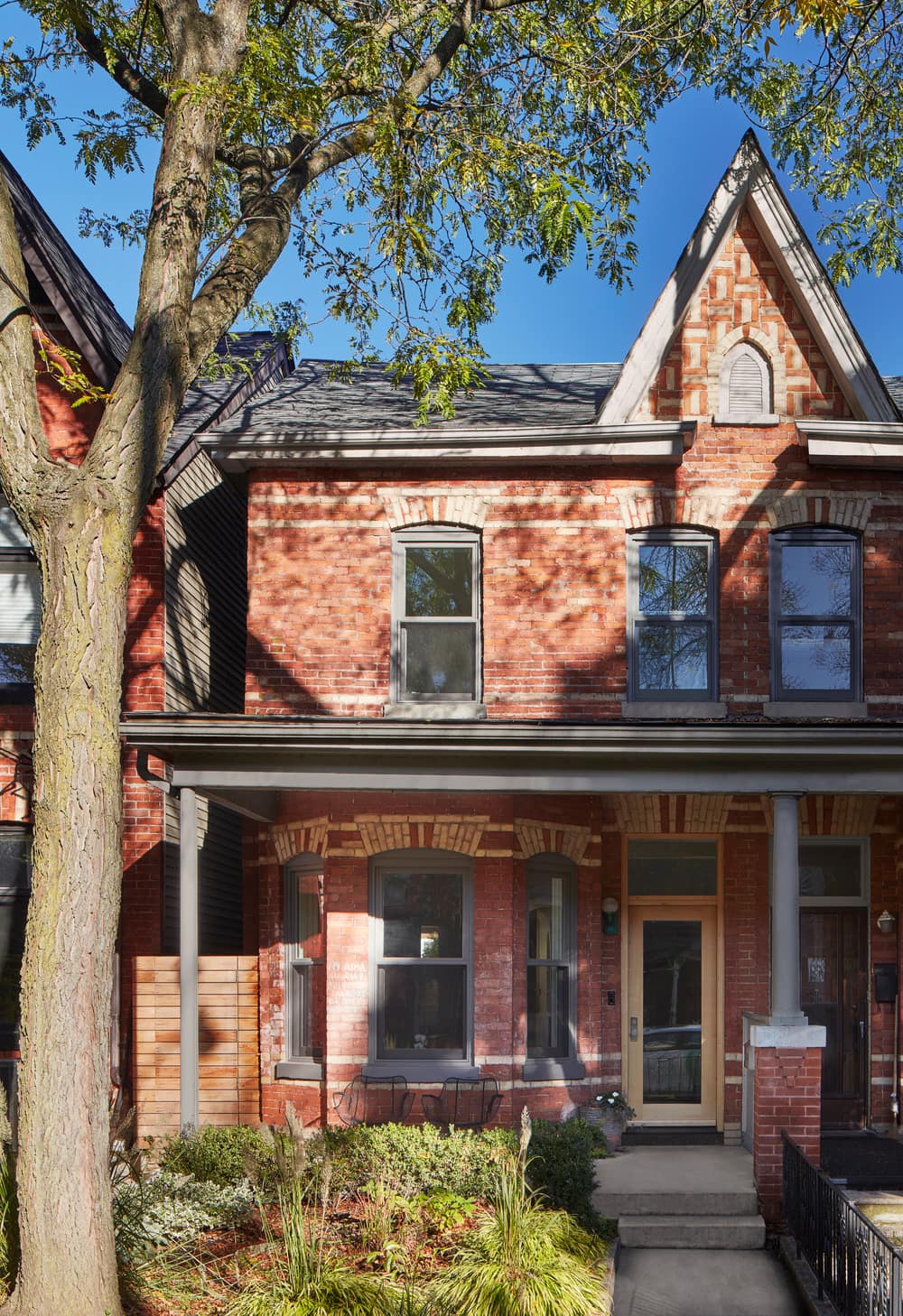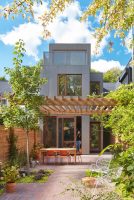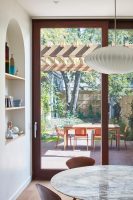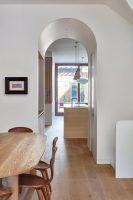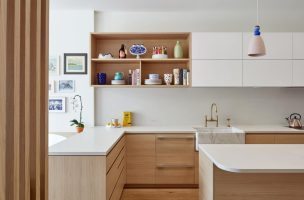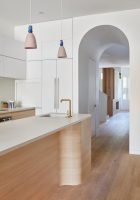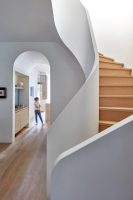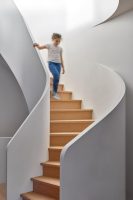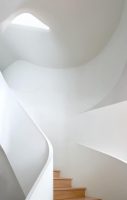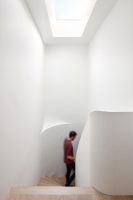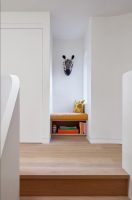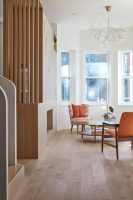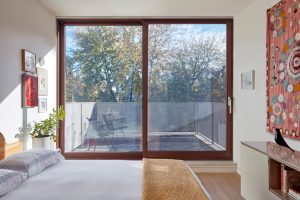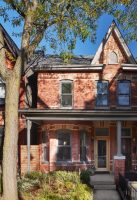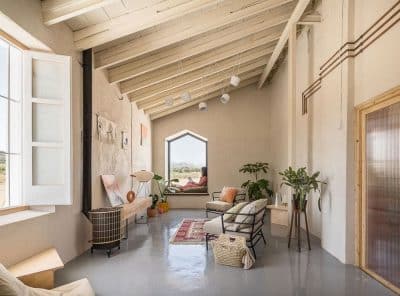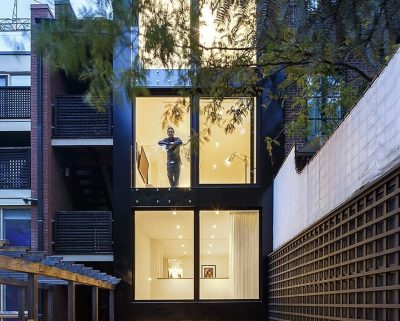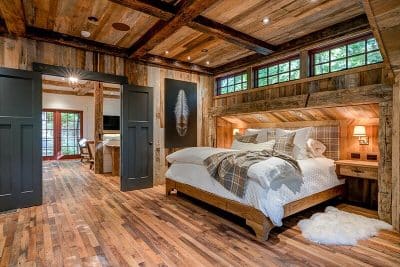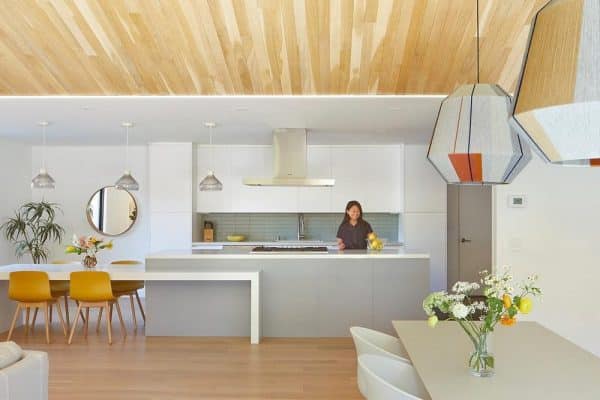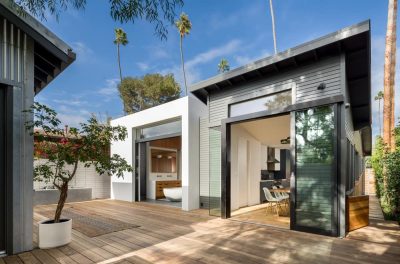
Project: Flow House / a semi-detached Victorian house
Architecture/Interior Design/Landscape Design: Dubbeldam Architecture + Design
Project Team: Heather Dubbeldam, Andrew Snow, Krystal Kramer, Scott Sampson, Gigi Presentey, Omkar Kulkarni
Contractor: DDF Contracting Ltd.
Consultants: Blackwell Structural Engineers
Location: Toronto, Ontario (The Annex)
Size: 2,500 s.ft. / 230 s.m.
Photo Credits: Riley Snelling
Dubbeldam Architecture + Design unveils Flow House, a semi-detached Victorian house in midtown Toronto that has been reconfigured for a creative couple and their children. The transformation of the 130-year-old home included adding additional living space on the back and top of the home, improving connections to the outdoors, and updating the interior and rear yard for contemporary living. The traditional front façade remains, while the interior is now a meaningful reflection of the family’s unique personalities, vocations, and shared experiences.
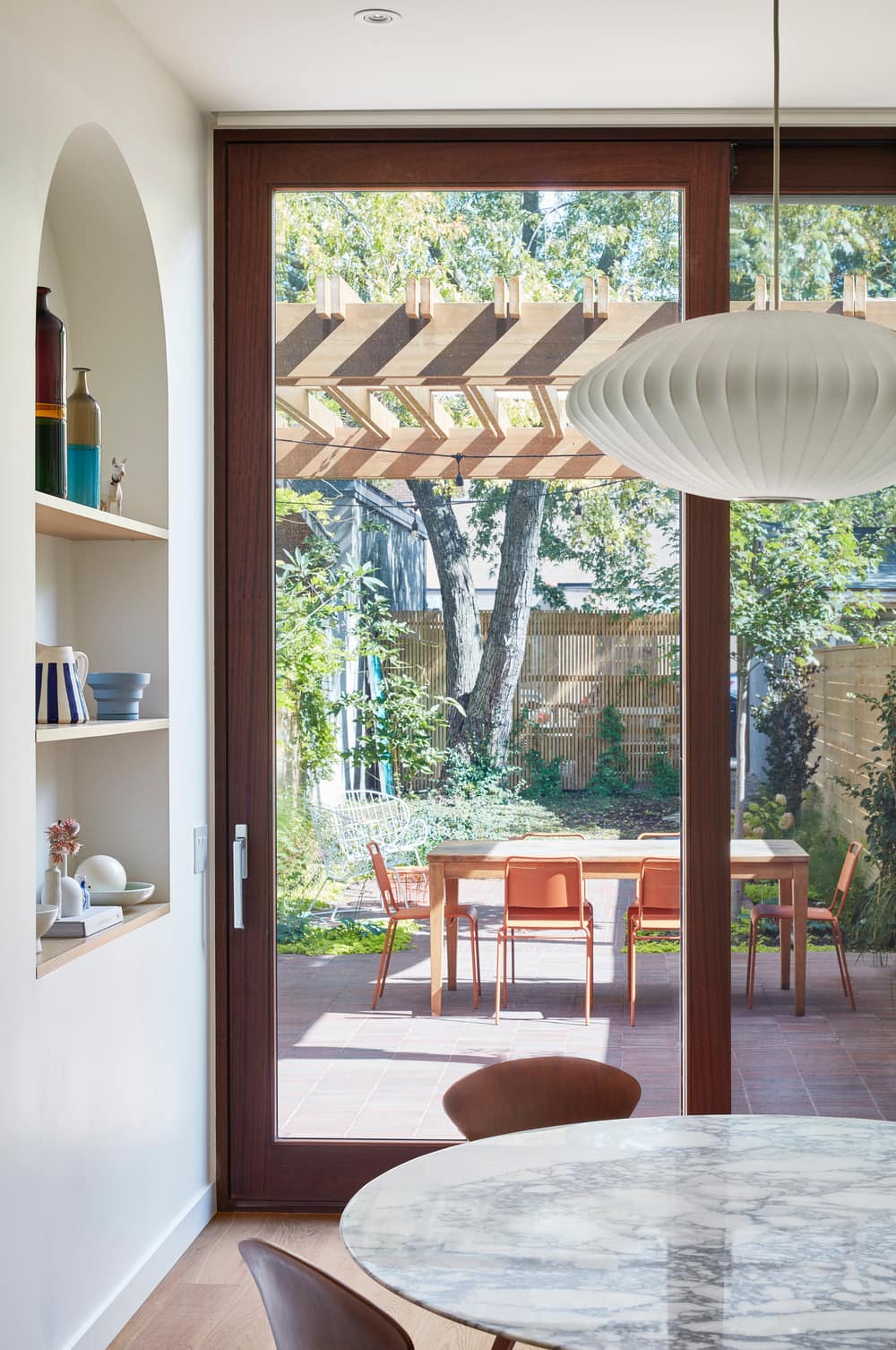
Though less than five meters wide, with an added area of only 230-square-meters, the home now seems much larger through a strategy of compression and expansion. Narrowed interstitial spaces enclose, creating a feeling of compression, then open to larger spaces with lofty ceilings. And throughout there are moments of surprise and delight – the merging of interior and exterior spaces, the introduction of natural light in unexpected places, and the playful sculpting of elements that establish an organic quality to the home.
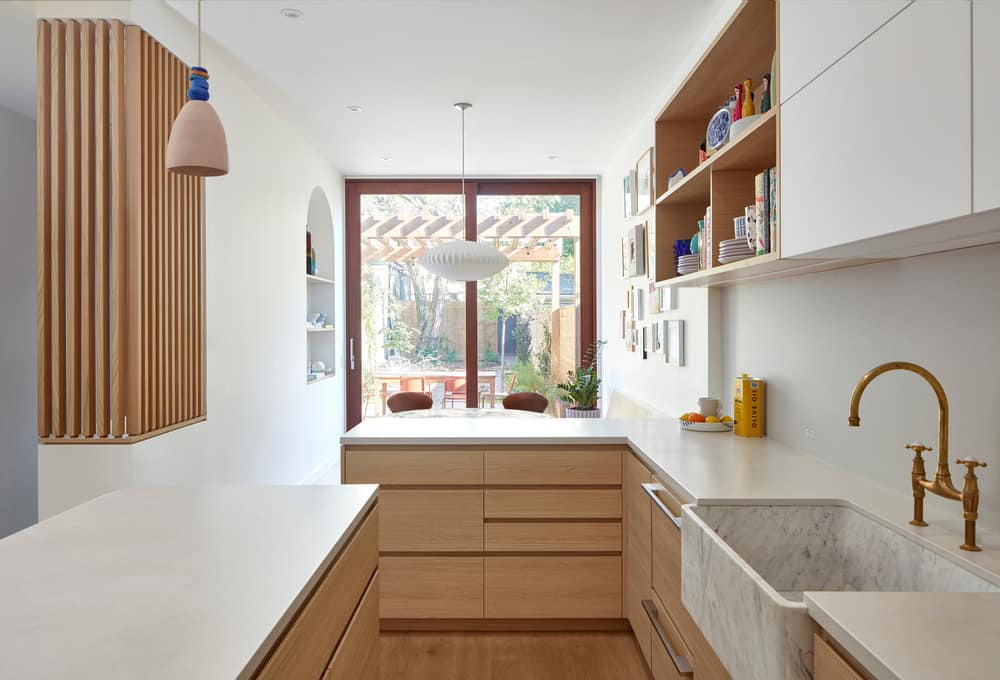
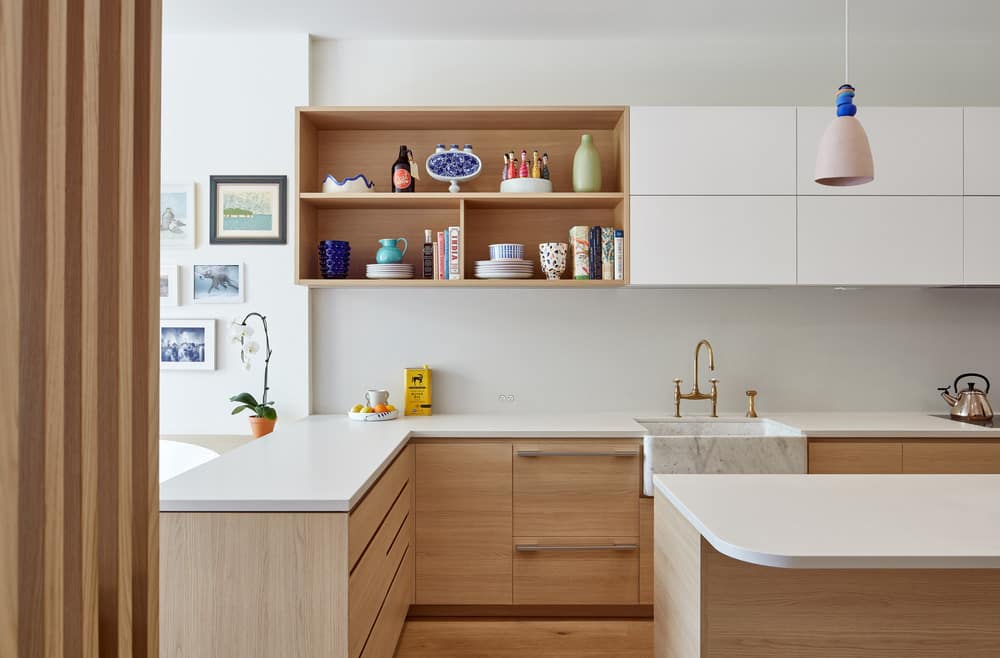
Referencing one homeowner’s profession as a ceramicist, the notion of tactility and craft permeates the home through materials, forms, patterns, and textures. Suggesting a complementary hybrid of Scandinavian and Mediterranean influences, the wood cabinetry, screens, and flooring in warm white oak are accented by concrete and Carrara marble sinks, antiqued brass fixtures, and hand-molded clay pendants. A clean backdrop of white walls and shelving provides a blank canvas to showcase the family’s collection of art, tapestries, and sculpture from local artists, along with artifacts gathered during travels abroad and the owner’s own ceramics. Colour animates the interstitial spaces of the home – terra cotta tiles are laid in a herringbone pattern in the entry foyer, and a wall of geometric cerulean blue tiles defines the bar between the kitchen and dining room.
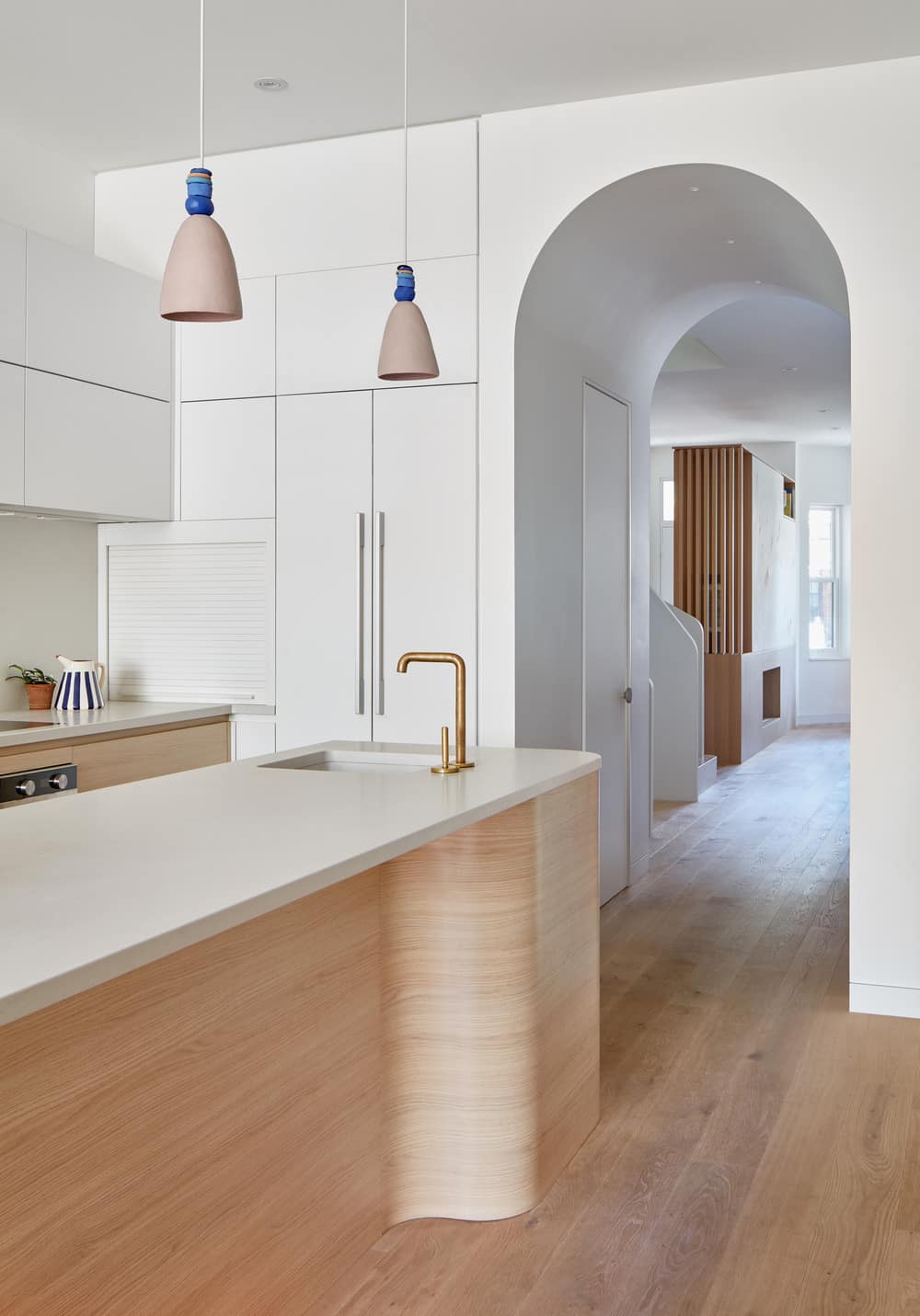
Underpinned by an aesthetic of fluid contours – a deliberate contrast to the rectilinear floorplan – the house’s interior elements appear sculpted rather than built. The helical staircase connecting all four floors is a focal point that expresses the home’s sense of flow. Awash in natural light from the skylight above, the winding balustrade and natural oak treads cast shifting shadows throughout the day.
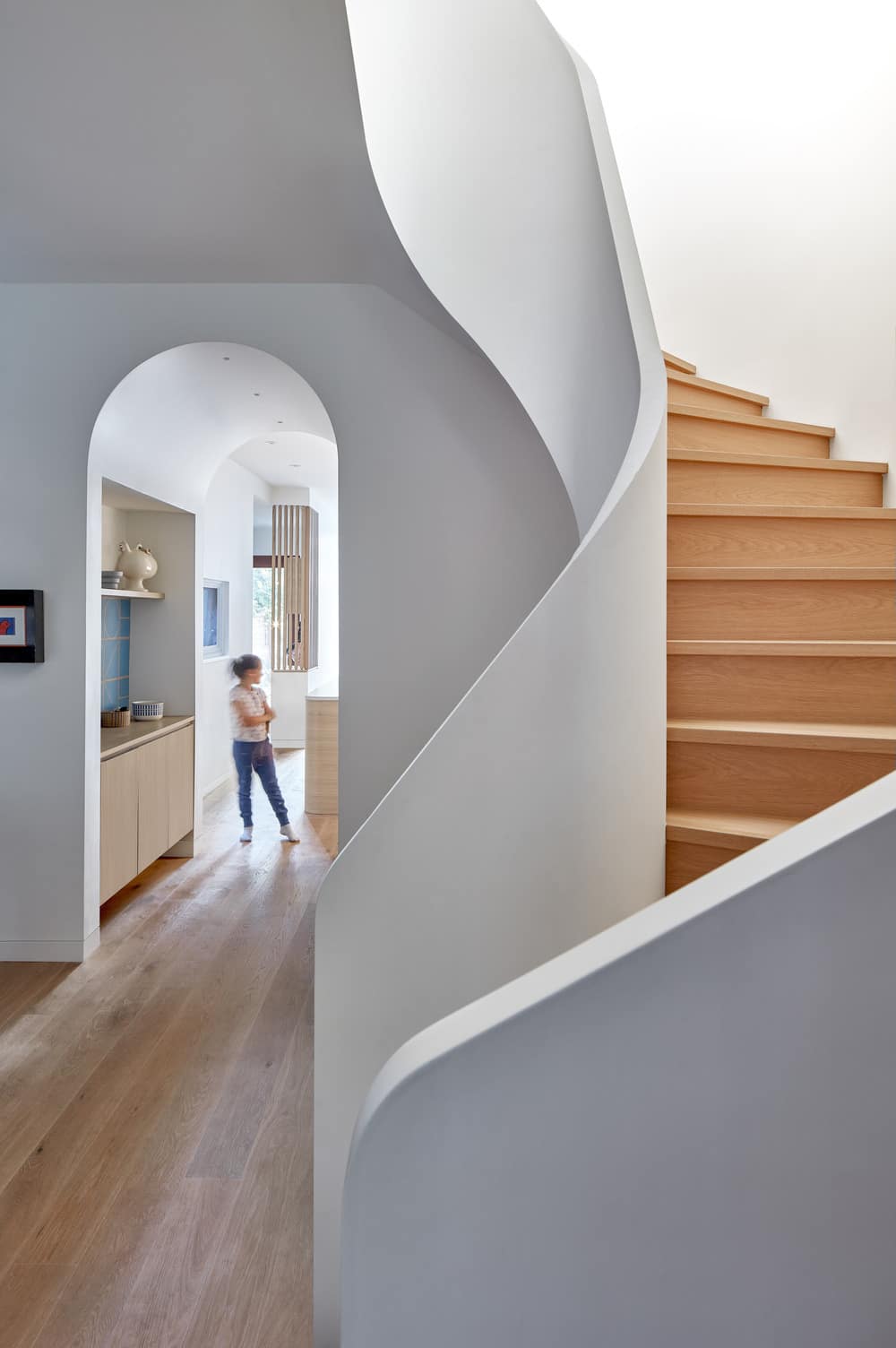
“Curvilinear forms are employed throughout,” says firm principal, Heather Dubbeldam. “Arched openings between rooms incite anticipation as they frame views of what lies beyond, resonating with curved walls, display nooks, the kitchen island and banquette, further enhancing the house’s sculptural sensibility.”
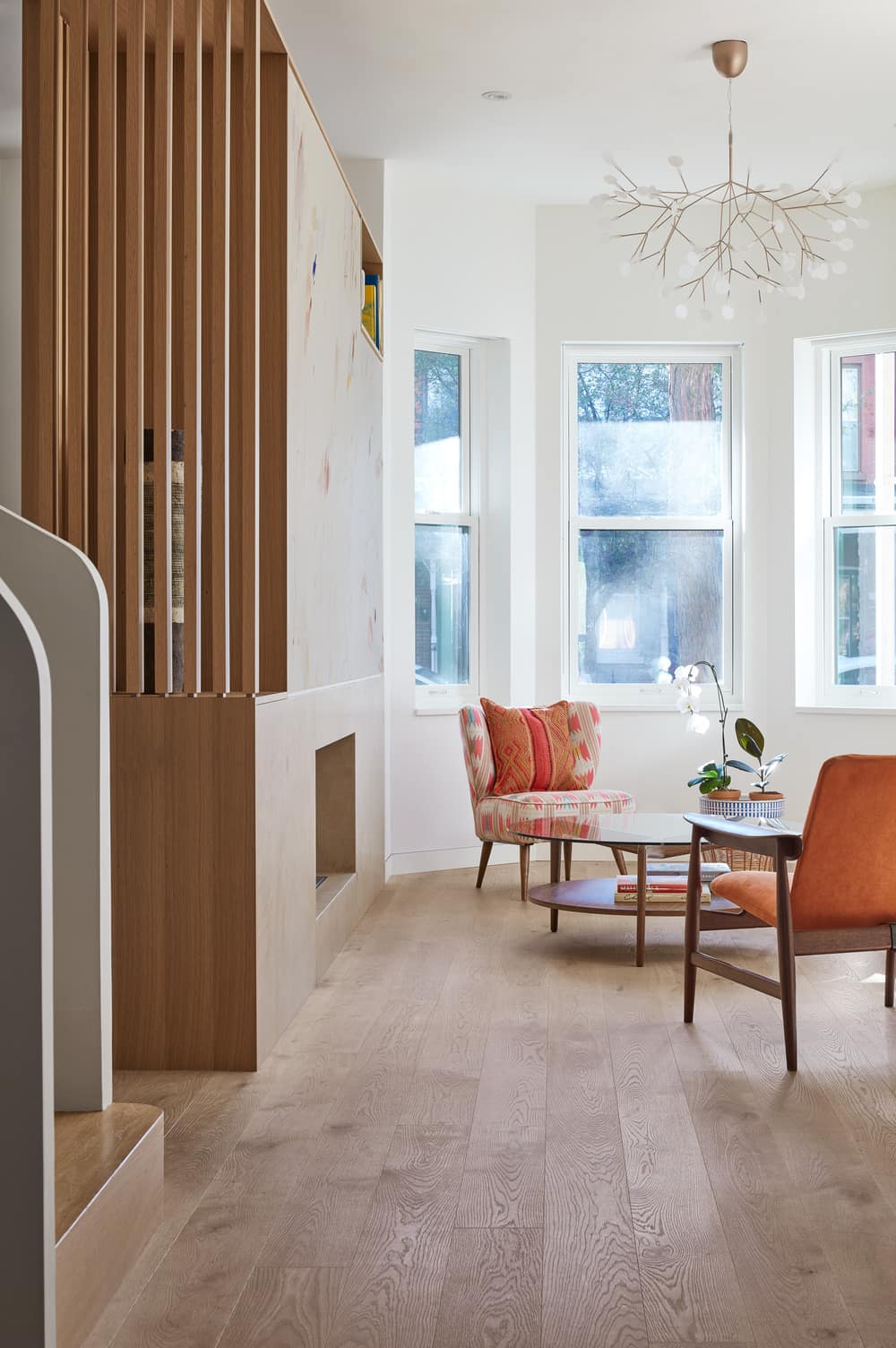
In addition to utilizing the latest sustainable systems and materials to promote well-being, large windows and skylights provide abundant light, natural ventilation, and connections to the outdoors. Mahogany-framed, floor-to-ceiling sliding glass doors on the third floor provide access to a roof deck, while a similarly lofty door in the kitchen opens to the furnished back patio.
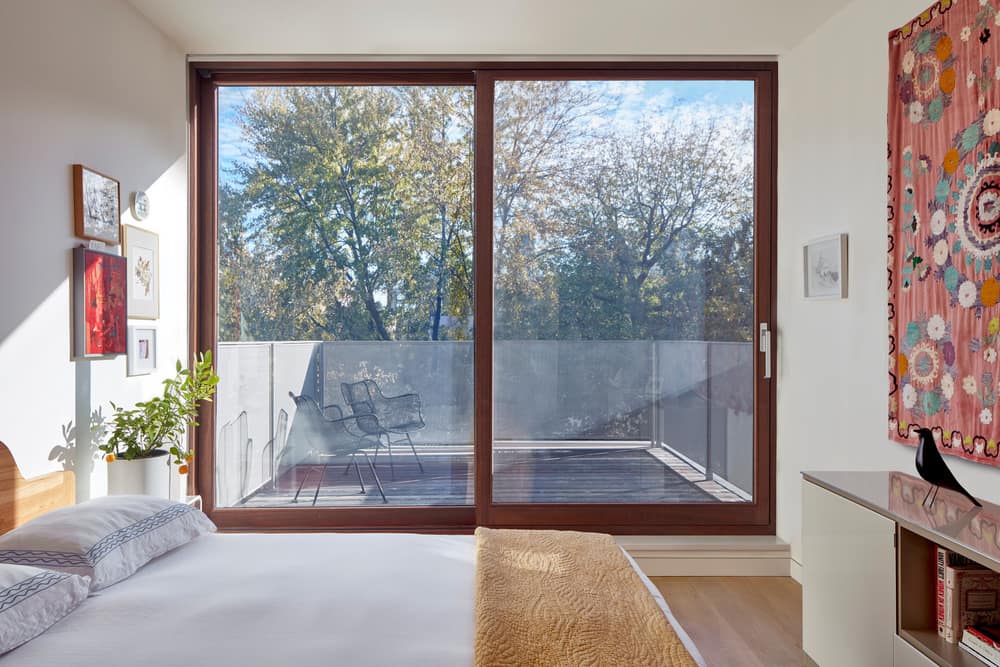
Similar spatial strategies continue in the design of the rear yard. The volumes of charcoal-coloured panels that comprise the new rear façade are stepped back on multiple planes to create a roof deck and recessed entrance. In the back garden, compression and expansion is further explored through narrowed planting beds that open to wider spaces designed for play, dining, and relaxation. The wooden pergola, brick pavers, and ochre outdoor furniture are a nod to the various temperate climates the family has experienced together, while the landscaping of lush plantings provide interest year-round.
